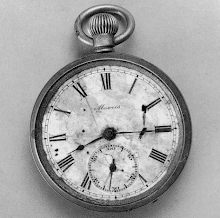skip to main |
skip to sidebar
 The geophysical survey field team prepares to return to work in the Dalecarlia Woods this month after a nearly two month break caused by a contractor worker injury … Dalecarlia Woods is a former World War I down range impact and possible munitions disposal area that includes about 62-acres … “Based on the former use of this area and what’s already been found on the surface, it would not be a big surprise to find a significant amount of munitions debris directly below the surface in this area,” said Lan Reeser [design team leader, USACE]. “We have procedures in place to safely address whatever munitions related finds we may encounter.”The Corps’pondent
The geophysical survey field team prepares to return to work in the Dalecarlia Woods this month after a nearly two month break caused by a contractor worker injury … Dalecarlia Woods is a former World War I down range impact and possible munitions disposal area that includes about 62-acres … “Based on the former use of this area and what’s already been found on the surface, it would not be a big surprise to find a significant amount of munitions debris directly below the surface in this area,” said Lan Reeser [design team leader, USACE]. “We have procedures in place to safely address whatever munitions related finds we may encounter.”The Corps’pondent
June 2010 (pg. 3)
 Presenters: Finn Longinotto and Ryo Sato
Presenters: Finn Longinotto and Ryo Sato
Global Green USA's Security and Sustainability Program continued discussion on sea-dumped munitions, especially chemical weapons (CW) as part of its "Healing the Oceans" initiative. This roundtable gave a general introduction to the issue, describing the geography, quantities and potential health hazards ... The session was particularly important in defining the context within which the more in-depth roundtables to follow will delve further into the primary geographic locations – the Baltic, the Pacific including Hawaii, and the Mediterranean – and tackle legal, public health and possible mitigation issues.
Sea-Dumped Munitions: Risks & Challenges
May 10, 2010
James Martin Center for Nonproliferation Studies
Monterey Institute of International Studies
.jpg) On March 29, a broken bottle spewed smoke inside the containment tent. Tests show the fumes came from arsenic trichloride, which is poisonous by inhalation, skin contact or ingestion. Known as "arsenic butter," the compound was used to boost the lethality of mustard, a blister agent that reportedly caused more than 1 million casualties in World War I, and to produce lewisite, dubbed the "dew of death," and other chemical warfare agents.
On March 29, a broken bottle spewed smoke inside the containment tent. Tests show the fumes came from arsenic trichloride, which is poisonous by inhalation, skin contact or ingestion. Known as "arsenic butter," the compound was used to boost the lethality of mustard, a blister agent that reportedly caused more than 1 million casualties in World War I, and to produce lewisite, dubbed the "dew of death," and other chemical warfare agents.
The find was deemed so perilous that work has been halted until Army engineers can determine how to safely proceed. "The concern is they may find a lot more, and there's a real question whether the air pollution controls are adequate," said Paul Chrostowski, an environmental scientist who monitors the cleanup for the university. Kerwin, the university president, was forced to abandon his home for two years when his yard was dug up. He and his wife moved back last fall after tests showed the hazard was gone. "We may have to change our analysis now," Chrostowski said. "He may have to move again."
Bob Drogin
Los Angeles Times
May 10, 2010 (pg. 1)
 Free Hit Counter
Free Hit Counter
 The geophysical survey field team prepares to return to work in the Dalecarlia Woods this month after a nearly two month break caused by a contractor worker injury … Dalecarlia Woods is a former World War I down range impact and possible munitions disposal area that includes about 62-acres … “Based on the former use of this area and what’s already been found on the surface, it would not be a big surprise to find a significant amount of munitions debris directly below the surface in this area,” said Lan Reeser [design team leader, USACE]. “We have procedures in place to safely address whatever munitions related finds we may encounter.”
The geophysical survey field team prepares to return to work in the Dalecarlia Woods this month after a nearly two month break caused by a contractor worker injury … Dalecarlia Woods is a former World War I down range impact and possible munitions disposal area that includes about 62-acres … “Based on the former use of this area and what’s already been found on the surface, it would not be a big surprise to find a significant amount of munitions debris directly below the surface in this area,” said Lan Reeser [design team leader, USACE]. “We have procedures in place to safely address whatever munitions related finds we may encounter.”

.jpg)



